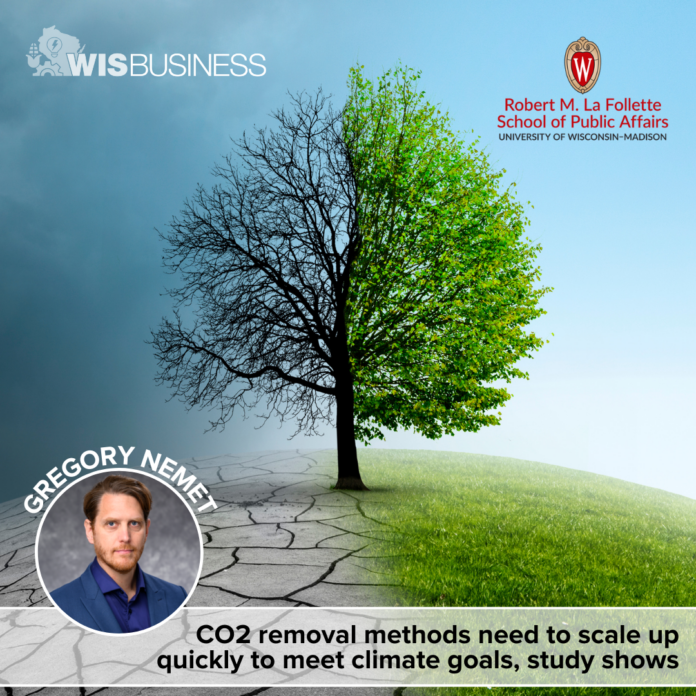New methods for removing carbon dioxide from the atmosphere will need to scale up quickly to meet targets established under the Paris Agreement, according to a new study from UW-Madison authors.
The study, led by Prof. Gregory Nemet of the university’s La Follette School of Public Affairs, was published last week in the scientific journal Joule.
Researchers found two gigatons of carbon dioxide are currently being removed from the atmosphere each year, though just 0.1% of that is due to “novel” carbon dioxide removal methods. The rest is due to forestry practices, according to an overview from the university.
But that pace falls well short of what needs to occur to limit atmospheric warming to 2 or 1.5 degrees Celsius, according to the study. Modeling shows “we need to remove hundreds of gigatons of carbon dioxide from the atmosphere over the course of the century to meet the Paris Agreement and ensure the sustained wellbeing of our planet,” the university says.
This international treaty was adopted in 2016, outlining nearly 200 countries’ commitments to reduce and limit greenhouse gas emissions. The United States rejoined the agreement in 2021 under President Joe Biden after previously withdrawing under then-President Donald Trump.
Ongoing conventional carbon dioxide removal methods include reforestation, wetland restoration and improved forest management. But other approaches that “have only been deployed at small scale” so far include carbon capture and sequestration, direct air carbon capture and storage, and biochar, a form of charcoal made by heating biomass in an oxygen-free environment.
Expanding these non-forestry approaches will be necessary for meeting the atmospheric warming goals of the Paris Agreement, according to the study. Authors found they would need to scale up by a factor of 1,300 by the middle of the century.
Jan Minx is the study co-author and a researcher with the Mercator Research Institute on Global Commons and Climate Change in Germany. He says the formative phases for these new removal methods — taking place between first commercialization and rapid scaling up — need to be “at least as active as the fastest historical analogues” to have a true impact.
“This will require more serious commitments toward novel removal technologies than are currently in place,” he said in a statement. “The required levels will only be feasible if we see substantial development of novel [carbon dioxide removal]’s formative phase in the next 15 years.”
Study results will be included in the United Nations’ annual Emissions Gap Report for 2023, according to the release.
See the full study here: https://www.sciencedirect.com/science/article/abs/pii/S254243512300449X
–By Alex Moe






